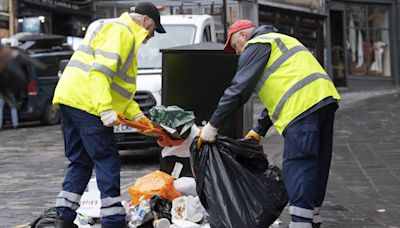Search results
Throughout its history, Scotland has long had a tradition of migration from Scotland and immigration into Scotland. In 2021, the Scottish Government released figures showing that an estimated 41,000 people had immigrated from other international countries into Scotland, while an average of 22,100 people had migrated from Scotland.
- Overview
- Land
Scotland, most northerly of the four parts of the United Kingdom, occupying about one-third of the island of Great Britain. The name Scotland derives from the Latin Scotia, land of the Scots, a Celtic people from Ireland who settled on the west coast of Great Britain about the 5th century ce. The name Caledonia has often been applied to Scotland, especially in poetry. It is derived from Caledonii, the Roman name of a tribe in the northern part of what is now Scotland.
An austere land, subject to extremes of weather, Scotland has proved a difficult home for countless generations of its people, who have nonetheless prized it for its beauty and unique culture. “I am a Scotsman,” the poet and novelist Sir Walter Scott wrote in the 19th century; “therefore I had to fight my way into the world.” Historically one of Europe’s poorest countries, Scotland has contributed much to political and practical theories of progress: forged in the Scottish Enlightenment in the hands of such philosophers as Francis Hutcheson, Adam Smith, and David Hume, who viewed humankind as a product of history and the “pursuit of happiness” as an inalienable right, this progressive ideal contributed substantially to the development of modern democracy. Scots have also played a vital role in many of the world’s most important scientific and technological innovations, with inventors, engineers, and entrepreneurs such as Alexander Graham Bell, James Watt, Andrew Carnegie, and John McAdam extending Scotland’s reach far beyond the small country’s borders. Few students of English-language literature are unacquainted with historian Thomas Carlyle, poet Robert Burns, and novelist Muriel Spark.
Scotland’s relations with England, with which it was merged in 1707 to form the United Kingdom of Great Britain, have long been difficult. Although profoundly influenced by the English, Scotland has long refused to consider itself as anything other than a separate country, and it has bound itself to historical fact and legend alike in an effort to retain national identity, as well as to the distinct dialect of English called Scots; writing defiantly of his country’s status, the nationalist poet Hugh MacDiarmid proclaimed: “For we ha’e faith in Scotland’s hidden poo’ers, The present’s theirs, but a’ the past and future’s oors.” That independent spirit bore fruit in 1996, when the highly symbolic Stone of Scone was returned to Edinburgh, Scotland’s capital, from London, and in 1999 a new Scottish Parliament—the first since 1707—was elected and given significant powers over Scottish affairs.
Edinburgh is a handsome city of great historical significance and one of Europe’s chief cultural centres. Other significant principal cities include Glasgow, Dundee, Aberdeen, and Perth, all centres for industry, transportation, and commerce.
Britannica Quiz
Know Your UK Geography Quiz
Scotland is bounded by England to the south, the Atlantic Ocean to the west and north, and the North Sea to the east. The west coast is fringed by deep indentations (sea lochs or fjords) and by numerous islands, varying in size from mere rocks to the large landmasses of Lewis and Harris, Skye, and Mull. The island clusters of Orkney and Shetland li...
Size: Scotland measures 441 km (274 miles) from north to south. From east to west it varies from 38.8 km to 248 km. The overall coastline including the islands is 10,000 km! (69% of the total UK coastline) Population: Around 5,2 million (january 2002) Density: 64 people per sq km (166 per sq mile)
Time: 2 days minimum. Allow at least two full days to get a flavour of Edinburgh, Scotland’s capital. The same for Glasgow. Perth is pleasant but you can get a flavour in an afternoon. Stirling basically means a visit to Stirling Castle and a drive-through.
People also ask
How big is Scotland?
Is Scotland a part of the UK?
How big is Scotland compared to Great Britain?
How many miles of coastline does Scotland have?
Scotland from the Matthew Paris map, c. 1250, showing Hadrian's Wall and above it the Antonine Wall, both depicted battlemented. The long reign (900–942/3) of Causantín (Constantine II) is often regarded as the key to formation of the Kingdom of Alba. He was later credited with bringing Scottish Christianity into conformity with the Catholic ...
Mainland Scotland has 6,160 miles (9,910 km) of coastline. Including the numerous islands, this increases to some 11,602 miles (18,672 km). The west coast in particular is heavily indented, with long promontories separated by fjordlike sea lochs.
10,000 BC. The Palaeolithic Era. The period of earliest known occupation of Scotland by man is from the Palaeolithic era – also known as the Stone Age. Hunter-gatherers hunted for fish and wild animals and gathered fruit, nuts, plants, roots and shells. 3,000 BC. Neolithic Age.





